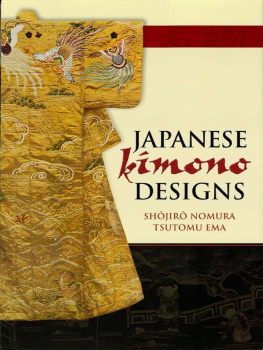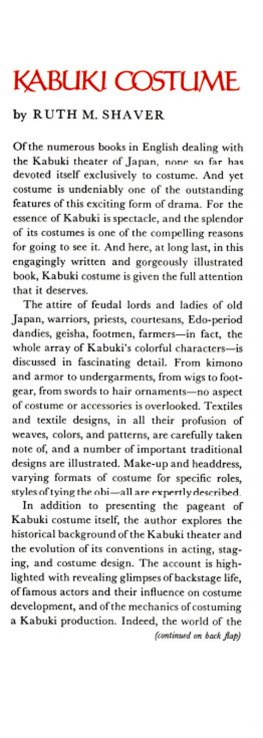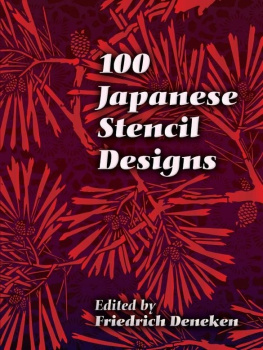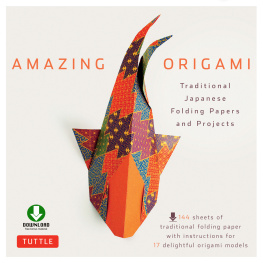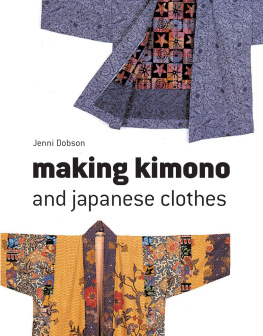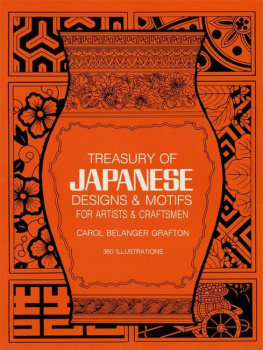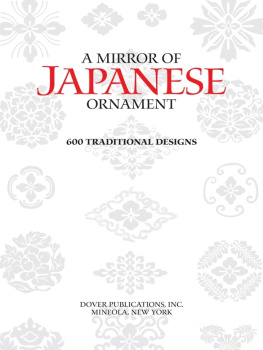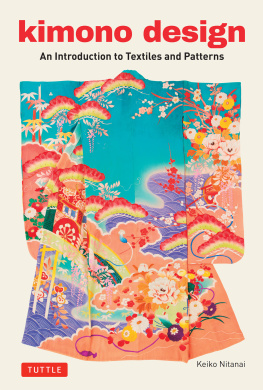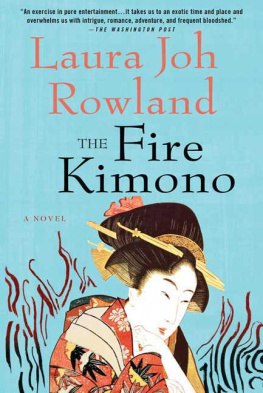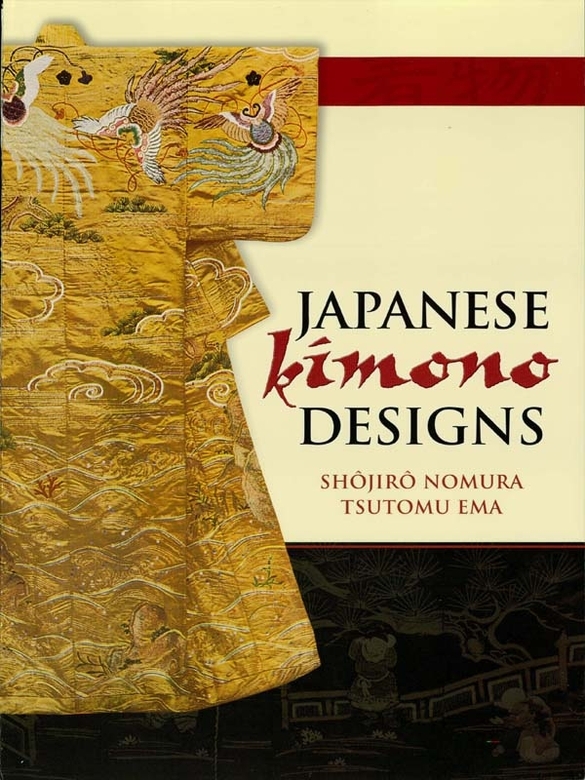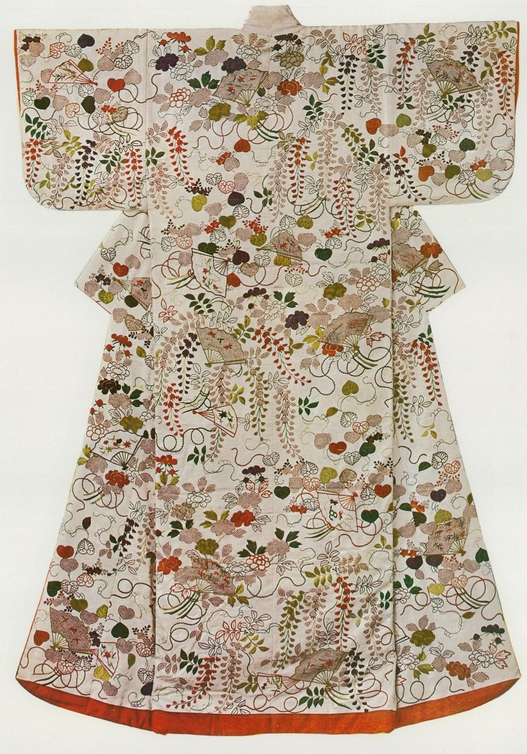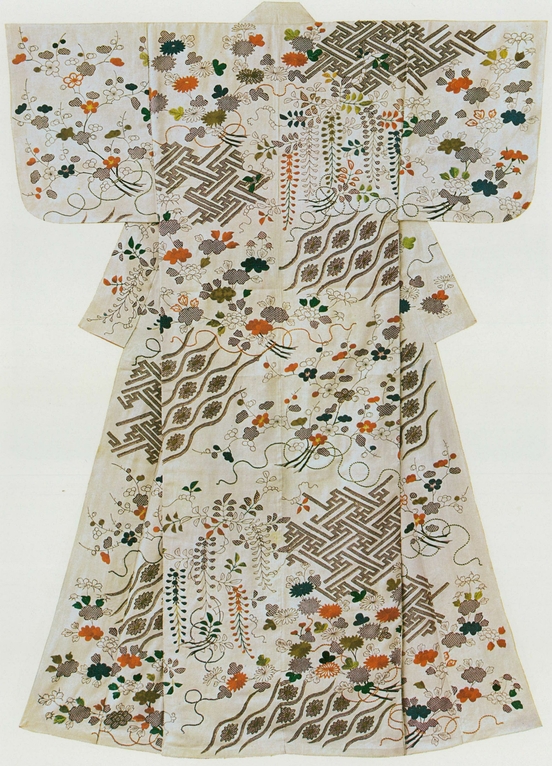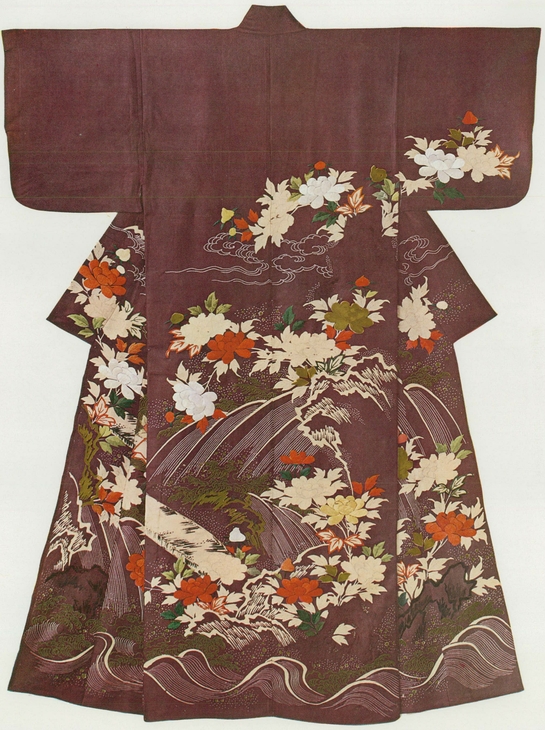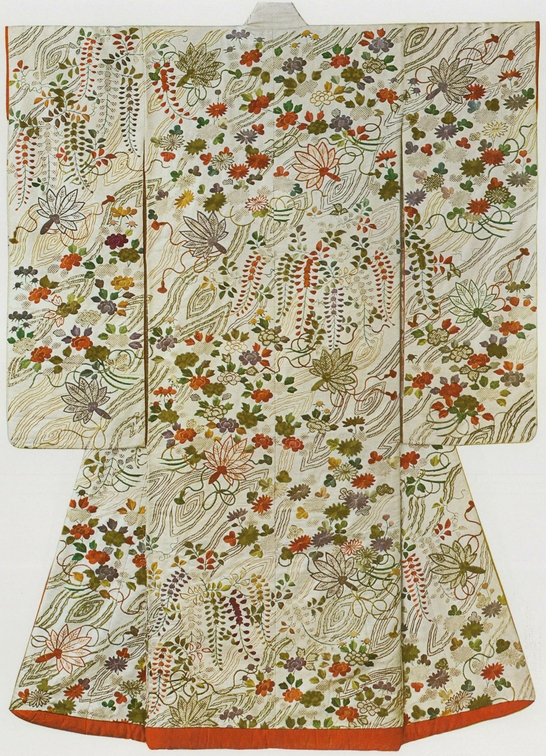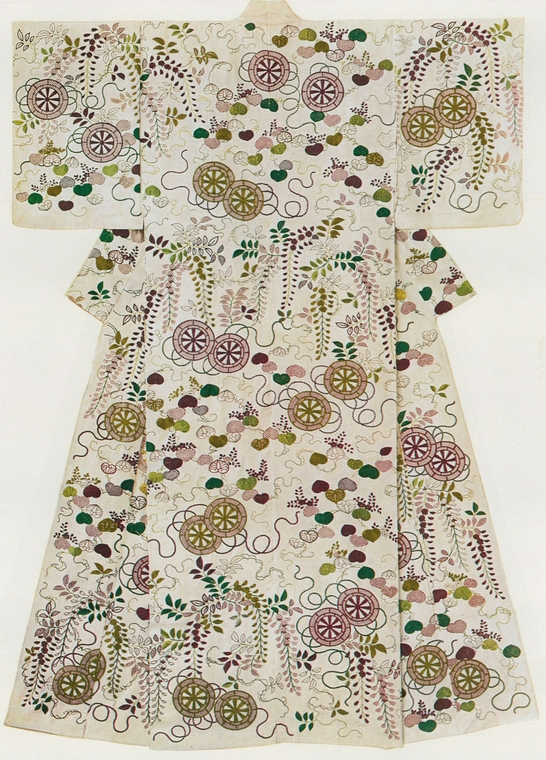JAPANESE KIMONO DESIGNS
L ITERALLY the Japanese word for thing to wear, the term kimono has come to refer specifically to the straight-cut robe that is the Asian garment most familiar to the people of the west. The kimono has a long ancestry that can be traced back to China. By the eighth century, Chinese-style robes were being worn by the Japanese court. In the tenth century, during the Heian period [794-1192], Japanese culture began to move away from Chinese traditions and to develop its own sensibility. The Heian period was one of elegance and refinement, and great emphasis was placed on dress. The basic garment for court women was square cut, but was much more voluminous than the modern kimono. As many as twelve different layers might be worn, each slightly larger in size than the last and a slightly different color. The innermost layer, the kosode (literally small sleeve, so named for its narrow arm openings), was the forerunner of the modern kimono. The Kamakura period [1192-1333] that followed was a period of turmoil and warfare, and the elegance of the Heian court gave way to simpler styles. By the late fourteenth century, the humble kosode took center stage as an outer garment, and by the mid-fifteenth century was worn by men and women of all classes.
Despite variations in size, material, decoration, and number of layers worn at a time, the kimono has remained a square-cut body with square-cut sleeves. In this, it differs dramatically from western dress, which tends to follow the lines of the body. This deemphasis on the shape of the wearer shifts the focal point of the garment from line to surface, and the kimonos unbroken rectangular sections make it a perfect canvas for the decorative arts. The demarcation between art and craft, so clear in the West, is non-existent in Japan and an article of clothing is as worthy of artistic endeavor as a painting. Many well-known artists in other fields designed kimonos and other textiles as well.
A wide variety of decorative processes are used in the making of kimonos, from different weaves, to embroidery, to sophisticated dyeing techniques. A few of the techniques used on the kimonos shown in this book are described below.
Shibori: a form of resist dyeing in which portions of the fabric are tied or stitched to protect it from the dye. There are many different types of shibori.
Kanoko: literally deer spot; a type of shibori that produces a small undyed dot on the surface of the fabric.
Kata kanoko: a method of using a stencil to produce the distinctive spot pattern of kanoko.
Chayazome: an early paste-resist dyeing method featuring indigo.
Yzen: A sophisticated resist dyeing method in which the resist is hand painted or stenciled onto the fabric. When the garment was then dyed, the areas protected by the resist remained undyed. Yzen is extremely flexible, allowing the artist to produce very painterly designs.
There are many different types of kimonos, differentiated by style or purpose. Below are the ones shown in this volume.
Kosode: The most common form of the kimono and the generic term used to describe all full-length garments.
Furisode: A kimono with long, swinging sleeves.
Katabira: An unlined summer kimono of hemp or ramie.
Awase: a lined kimono used in cooler weather.
Uchikake: an unbelted robe worn over a kosode
The kimonos shown are taken from two portfolios published in Japan in the 1930s. Plates 1-33 are from the private collection of the late Shjir Nomora, a highly respected expert on Japanese costume and author of a number of books on the subject. Plates 34-60 are geisha costumes collected by the Kikyya, a celebrated geisha house in Kyoto. The designs on the kimonos range from simple scatterings of flowers to scenes from classic literature and drama. All are unique and all are exquisite. They are presented here, not as fashion, but as art.
K OSODE; fans, wisteria, peonies and other flowers enrich this embroidered and kanoko summer garment; c. Bunka Era [1804-1818].
K OSODE willow-dyed robe with embroidered birds, leaves, and flowers; c. Bunka Era [1804-1818].
F URISODE; figured silk satin, embroidered with chrysanthemums and other patterns; c. Bunka Era [1804-1818].
K ATABIRA; embroidered and kata kanoko grasses and flowers of four seasons interspersed with diaper patterns; c. Bunka Era [1804-1818].
K ATABIRA; this loose weave kimono is decorated with peonies and waterfalls from hem to under the shoulders in a style known as takasuso (high hem); n. d.
F URISODE; kata kanoko and embroidered flowers of spring and autumn; c. Bunka Era [1804-1818].

